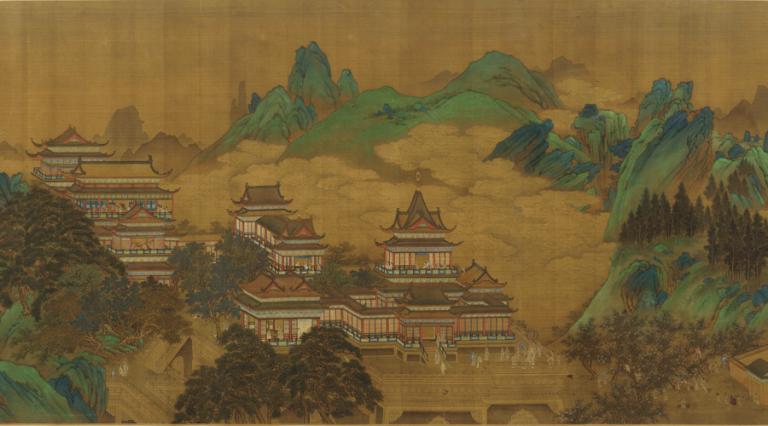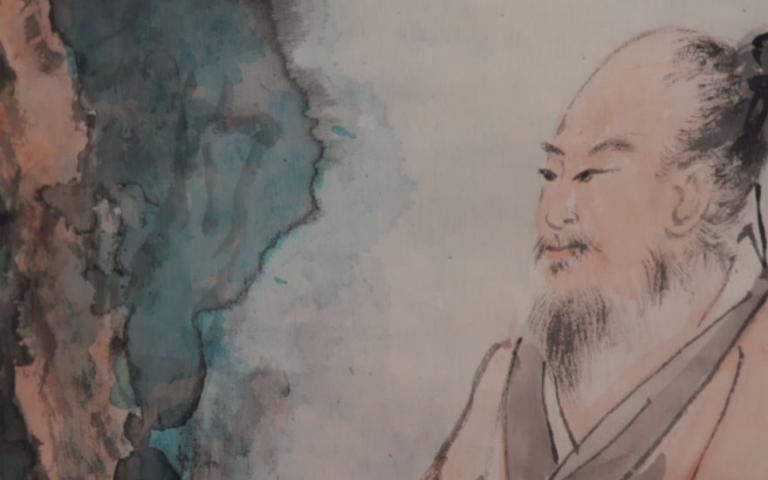Figure Painting in Ming Dynasty
4 min readIn Ming dynasty, as figure painting could be used to serve the emperors directly, it was considered as one of the most important kind of paintings in the court. Painters created many figure paintings in this period. For example, Emperor Ming Xuanzong Going on the Spree by Shang Xi, Calling on Mr. Pang by Ni Duan, Visiting Zhao Pu in a Snowy Night by Liu Jun. Dai Jin from Zhe School was most famous for his landscape painting, yet he had representative figure paintings as we11. Wu Wei was good at figure painting and made high artistic achievements. EvenWumen School had good painters of figure painting. Wen Zhengming, Tang Yin and Qiu Ying all had figure painting works left to us, Especially Qiu Ying, who was a professional painter, had even more delicate figure painting skills and gained good popularity. Du Jin and Guo Xu used in their figure paintings either refined line drawing for delicate and precise sketch or freehand outline drawing for simple and concise sketch. At the end of Ming dynasty, Chen Hongshou, Cui Zizhong and Ding Yunpeng’s figure paintings had different characteristics but were all well known.

Zeng Jing also gained his reputation in the painting field through portrait painting. Their painting works formed the reservoir of figure painting in Ming dynasty and were very influential to later painters.
Important painters in Ming dynasty include the following: Wu Wei, important painter of figure painting in early Ming dynasty, followed figure painting style of Wu Daozi, Li Gonglin and Liang Kai. He used lines to shape the figure and both meticulous drawing and line-reduced drawing to depict. The former figure painting had fine lines for comely image; the later used heavy strokes in a freestyle way and the figures shaped were vigorous. His representative works were Iron Flute and Spring in Wuling preserved till today.
Tang Yin was also highly accomplished in figure painting, both in fine strokes heavy colored style and water ink style. Figure paintings in his early years were mainly with fine strokes and heavy color, followed the tradition from Tang, Song and Yuan dynasties. The paintings were refined with smooth and fluent lines and thefigure depicted was usually plump with expression of nobility. His paintings in water ink freestyle used brush pen in simple and definite way. So the figures were seen with clear, heavy, bright and beautiful colors. This style of figure painting was better in demonstrating the inner world and personality of the depicted figure.
His representative works were Court Ladies of the Former Shu, Autumn Wind and Gauze Fan and Dongfang Shuo, etc.
Qiu Ying, with courtesy name Shifu, was born in a populace family in Taicang(in Jiangsu today) and later moved to Suzhou. He was first a lacquerer and later learned painting from Zhou Chen together with Tang Yin. He got to know literati Wen Zhengming and Zhu Yunming and gradually became cultivated. He made painstaking effort in painting practice and was good at both figure painting and landscape painting. His figure paintings also included both fine line sketch filled with color style and water ink freestyle. The previous painting style followed painters from Jin, Tang, Song and Yuan dynasties with diversification. The figure depicted had accurate sketch, round, gentle lines and elegant, beautiful colors. The later style was learned from Ma Yuan in Southern Song dynasty and Wu Wei in his time. He used brush pen in a simple, clear way with strength and made the lines smooth and fluent.
The figure depicted was cool, free and easy. His representative works were Wang Youjun Writing Calligraphy on Fan and Sleeping on the Qin under Willow.

Chen Hongshou(1599-1652), with courtesy name Zhanghou and title Laolian, was from Zhuji(in Zhejiang today). He had talent in poetry and prose writing, as well as calligraphy and painting. In late Ming dynasty, he had been a student in theImperial College and served the court later. After the doom of Ming dynasty he became a monk. Chen Hongshou was good at all kinds of paintings including figurepaintings, landscapes paintings, flower-and-bird, grass and insect, bamboo and rock paintings. The figures in his painting were mainly from Jin and Tang dynasties, and could be seen with sleek and fluent lines with strength, enormous body with exaggerated shape, diversified image with lofty and dignified expression. He also did print illustration for literature works and signboards of wine shops. His representative works were the volumes of Yang Sheng’ an with Flower Hairpin and print illustrations for Nine Songs, Shui Hu Ye Zi “Book pages of The Water Margin”and The Romance of Western Chamber, etc.









